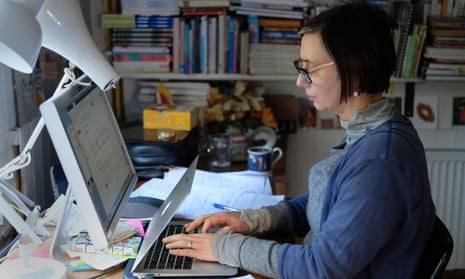More than two years on from the end of the last Covid lockdown, the UK has embraced working from home – to the extent it is now the work-from-home capital of Europe. A recent survey showed UK employees work from home for an average of 1.5 days a week, compared with an international average of 0.9 days. In 2019, about 12% of UK employees were working from home to some extent; by 2022 it was between 25% and 40%, depending on the time of year.
In other areas, the British workplace isn’t particularly flexible or easygoing: we consistently report some of the longest working hours in Europe. So how have we managed to end up in top position? It’s likely to be a combination of factors. First, the UK was already within the top five countries for remote working before the pandemic. By 2021, more than half of Brits were saying they’d like to work from home at least some of the time – and given the UK’s low unemployment rate, employers are incentivised to offer remote or hybrid working where possible to attract and retain staff.
In a recent LinkedIn poll, a third of UK office workers said they would quit if they had to return to the office full-time. Meanwhile in Spain, where unemployment is at 11.6%, workers do an average 0.9 days from home. It has helped, too, that trade unions and organisations such as Acas and the NHS have shown their support for working from home, and provided resources and guidance.
Caution should be exercised, however, in comparing mandatory working from home during the pandemic to WFH when employers have more time to work closely with individuals to ensure that the practical and psychological needs of home working are fully considered. Post-pandemic, hybrid working (working partly on site and partly from home) is the most common – at 28%, whereas 16% of people are working from home only. Eight in 10 of those who worked from home during the pandemic indicated they planned to continue in a hybrid pattern.
There are well documented concerns about WFH full-time – from fuel bills to social isolation. Younger workers are more likely to prefer travelling into work to meet people, and to benefit from networking and mentoring. A hybrid approach can help those issues and retain productivity alongside wellbeing for workers.
But it also requires managers and leaders to adapt, and poses some challenges for employers in terms of ensuring staff are fully transitioned and trained to work in this way. Line managers, who are key to the success of managing and monitoring working from home, need to focus on developing trusting relationships and utilising all types of communication methods, including on- and off-site training, and appropriate accommodations where necessary.
What has been ignored with the recent demands from CEOs for workers to return to the workplace full-time is the impact this can have on a more inclusive and diverse workforce and culture. For those with disabilities, working from home either partly or fully has been enormously helpful in terms of flexibility and control over their working environment. In an NHS survey of disabled staff, 84% wanted to retain at least some form of flexibility and remote working.
Technology, including virtual means to communicate, artificial intelligence and other new tools, are likely to add to the ability to work across many locations and at any time. Getting the mix of home and office working right for different groups of workers can provide a means to be inclusive, improve wellbeing and ensure the organisation benefits from employees strengths and talents.
The future will bring even more different and perhaps radical ways of working; now is our chance to look forward, rather than yearning for old styles of working that no longer fit our society.
Prof Christine Grant is an occupational psychologist at the Coventry University Centre for Healthcare Research

